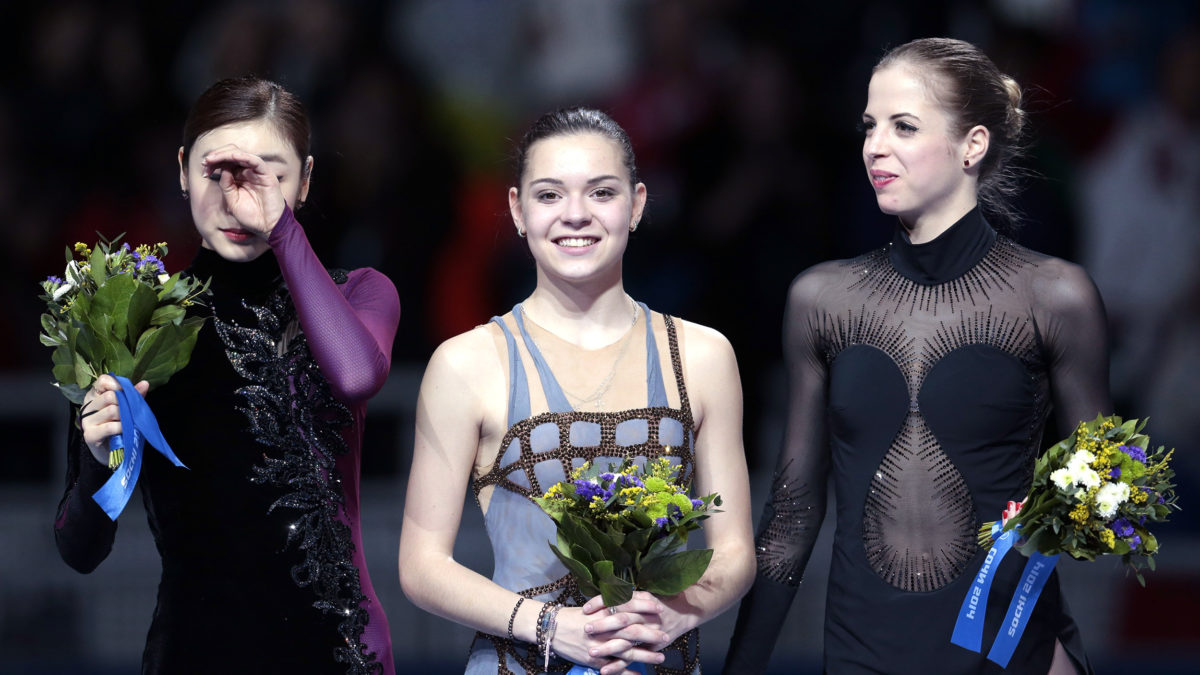
As the saying goes, “rules are made to be broken.” But this year, figure skating at the Olympics seems to be taking that literally.
Even before the Winter Olympics started a few weeks ago, reports were coming out of Sochi about how figure skating judges – Russia and the United States, to be specific – were teaming up to help each other out.
First it was Scott Moir and Tessa Virtue in ice dancing, when the reigning Olympic gold medalists placed second behind Charlie White and Meryl Davis from the United States, who got silver in Vancouver. Then there’s the Yuna Kim upset, who was overtaken by Russian Aledina Sotnikova in women’s figure skating. Kim got gold in 2010 while this is Sotnikova’s first time at the Olympics.
Although no one seemed to take the reports too seriously at first, once figure skaters weren’t placing where experts thought they would, rumours started to fly. And let’s face it: in a sport where corruption is not only rumoured but proven, it’s not hard for people to believe.
The 2002 Winter Olympics in Salt Lake City saw a major scandal when it arose that the pairs’ figure skating had been fixed. Elena Berezhnaya and Anton Sikharulidze of Russia received the gold medal, while Jamie Salé and David Pelletier of Canada placed second. Judges from Russia, China, Poland, Ukraine and France placed the Russians first, while Canada, the US, Germany and Japan chose the Canadians. Suspicions fell on the French judge Marie-Reine Le Gougne, and it was later revealed the head of the French skating organization forced Le Gougne to vote for the Russians no matter what, so the French ice dancing couple would get a higher ranking in their dance. This led to two gold medals being handed out – the Canadians got upgraded from silver and the Russians kept their original gold.
No one can say for sure (yet) that any judges have made deals to get a better placement, but it’s not stopping anyone from speculating. In Scott and Tessa’s case, almost everyone believes they deserved to win, whether the scores were rigged or not. The ice dance this year featured a move called the Finnstep, which was invented by former Finnish figure skater Petri Kokko and his partner Susanna Rahkamo. Kokko took to Twitter during the competition to express his support for the Canadian duo, even stating the Americans had done the Finnstep incorrectly. “Hope @Virtue_Moir wins. Americans timing off in the #finnstep and restrained even otherwise,” he said, while another tweet read, “I don’t understand the judging in #icedancing. @Virtue_Moir should be leading in my honest opinion. #finnstep #Sochi2014.”
It’s not just Canadians. Korean skater Yuna Kim, the favourite for gold in women’s figure skating, placed second behind Russian figure skater Aledina Sotnikova, despite Kim’s clean routine and Sotnikova’s flawed landings. This led to almost two million people worldwide signing a petition for demanding an investigation into the judging system.
These allegations could turn out to all be false. Perhaps the judges honestly felt the gold medal winners put on the better performances and these rumours are doing nothing more than angering people for no good reason. But in figure skating, matchfixing isn’t uncommon. You can’t blame people for trying to find out what’s really going on.
It seems to me all the sequins and makeup are trying to cover up an ugly problem in a beautiful sport.
